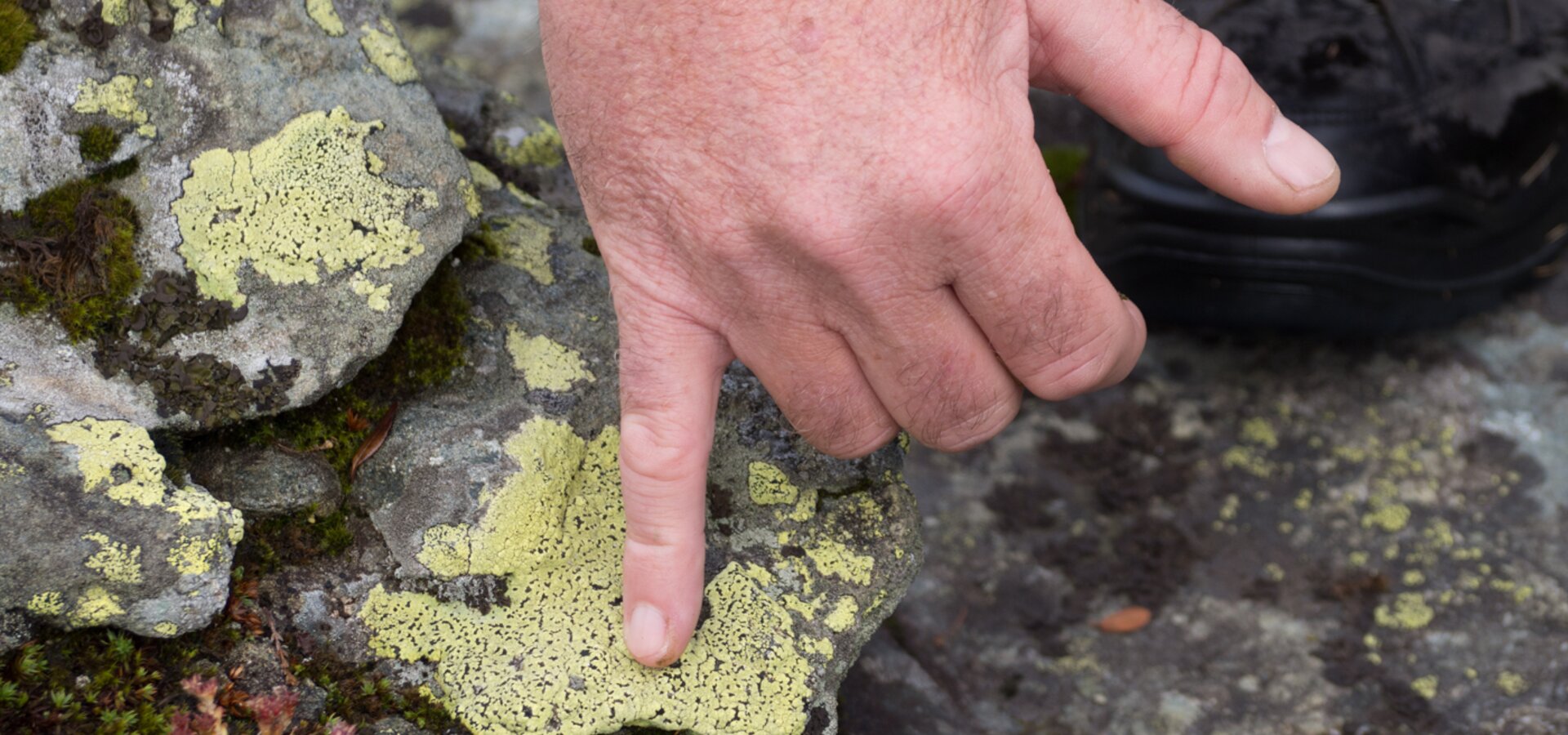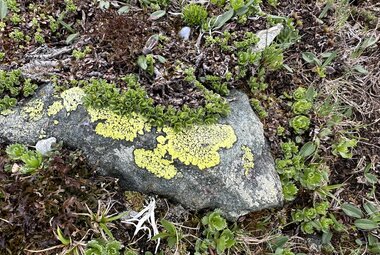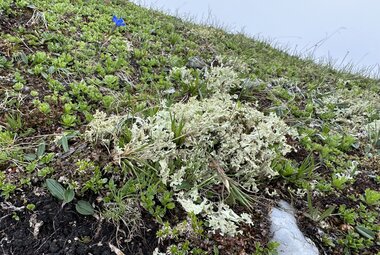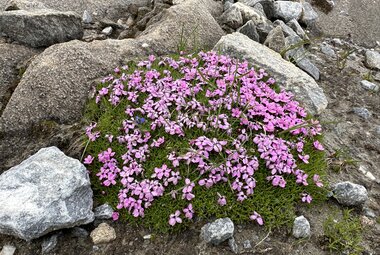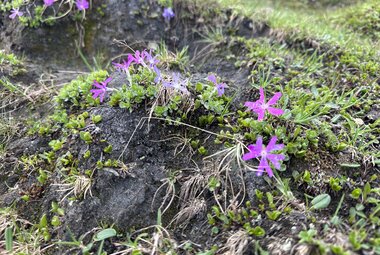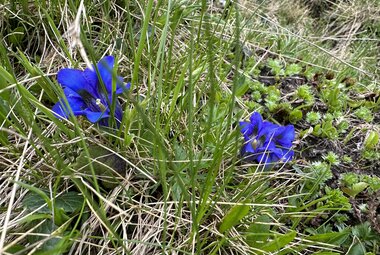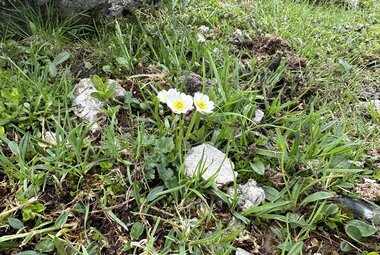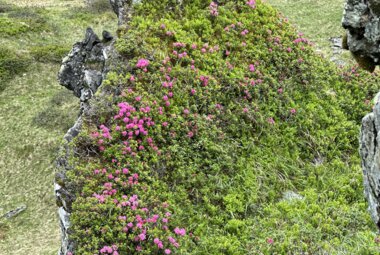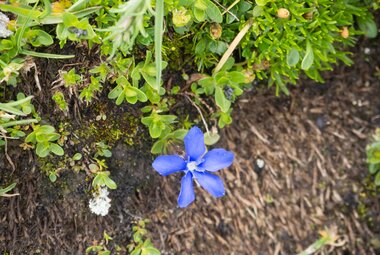Putting Kitzsteinhorn's plant world under the microscope
If you look closely, you'll likely discover the unlikely. On the Kitzsteinhorn Explorer Tour, National Park ranger Werner Schuh took us on an expedition through four climate zones. Especially places we wouldn't typically expect plants to grow were the ones we took a careful look at.
Werner Schuh has been a National Park ranger since 2011 and has been familiarizing visitors with the philosophy and the flora and fauna of the Hohe Tauern National Park on guided tours ever since — just as he does on the daily Kitzsteinhorn Explorer Tours. Together with small and big visitors, he explores the vegetation of the temperate climate in the valley all the way up to the tundra and arctic.
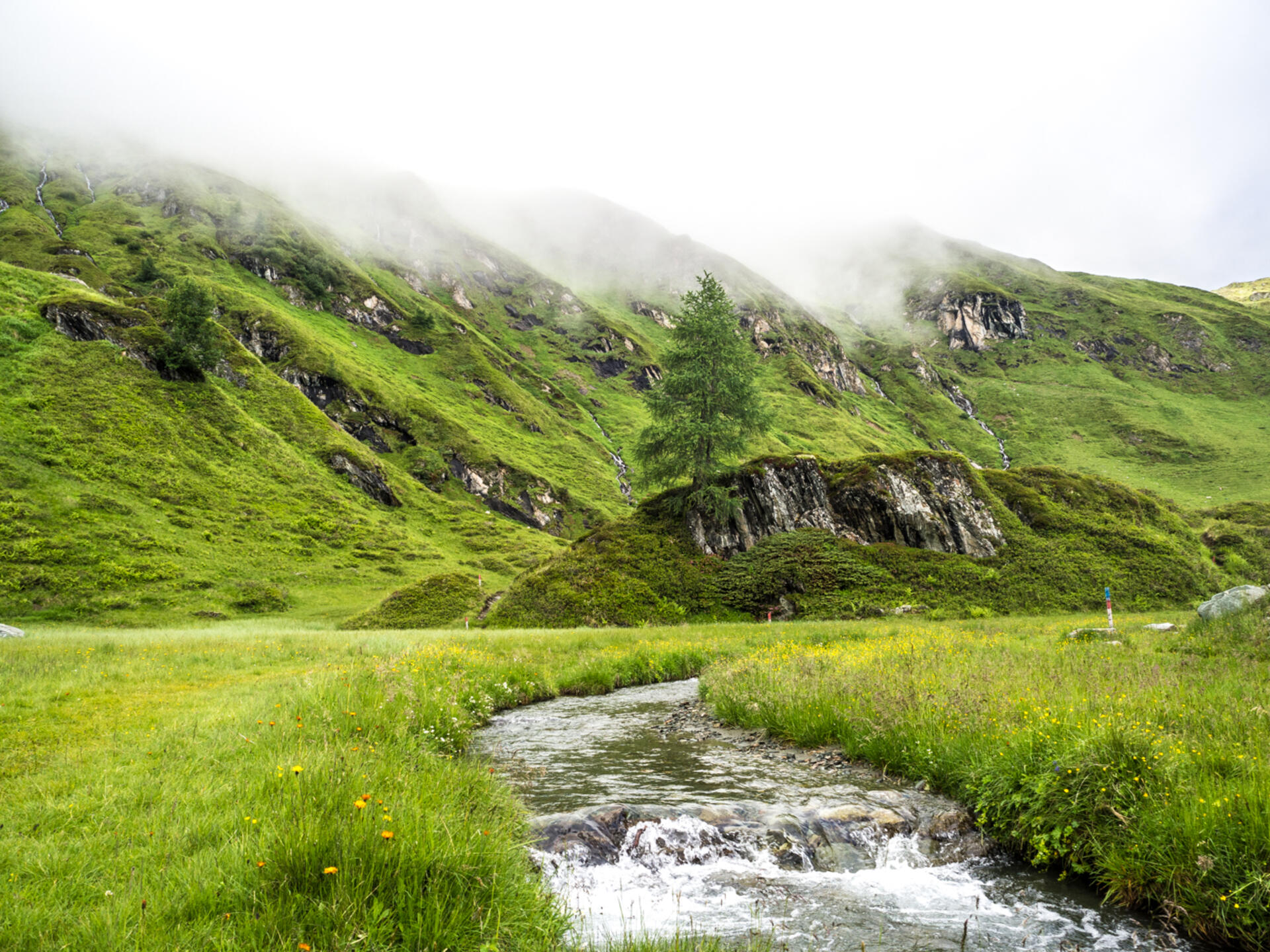
People are used to see flowers, trees and bushes explode into a thousand colors down in the valley. But the higher up the mountain you look, the more rugged the landscape becomes. On a short loop hike on the green alpine pastures of the Langwied, Werner redirects our look from the stunning Hohe Tauern summits scenery down to our feet. He explains: "Here, the tundra vegetation begins, just as you would find it in the northern part of Sweden. Once this was a seabed and the glacier extended from the Zell valley all the way up here to the Langwied. The map lichen shows us how much time has passed since the glacier withdrew." He is showing us an inconspicuous yellow growth on the exposed rocks. "Scientists calculate the time the rocks emerged from the ice from the lichen size, for it only grows 0,1 mm per year." The region's most poisonous plant, the monkshood, the crepis, which is related to the dandelion, clematis and cotton grass also grow on the Langwied alpine pastures and marshland. And what's particularly interesting for gin lovers: the common juniper thrives up here, too. The red clover reveals where marmots feed up for winter.
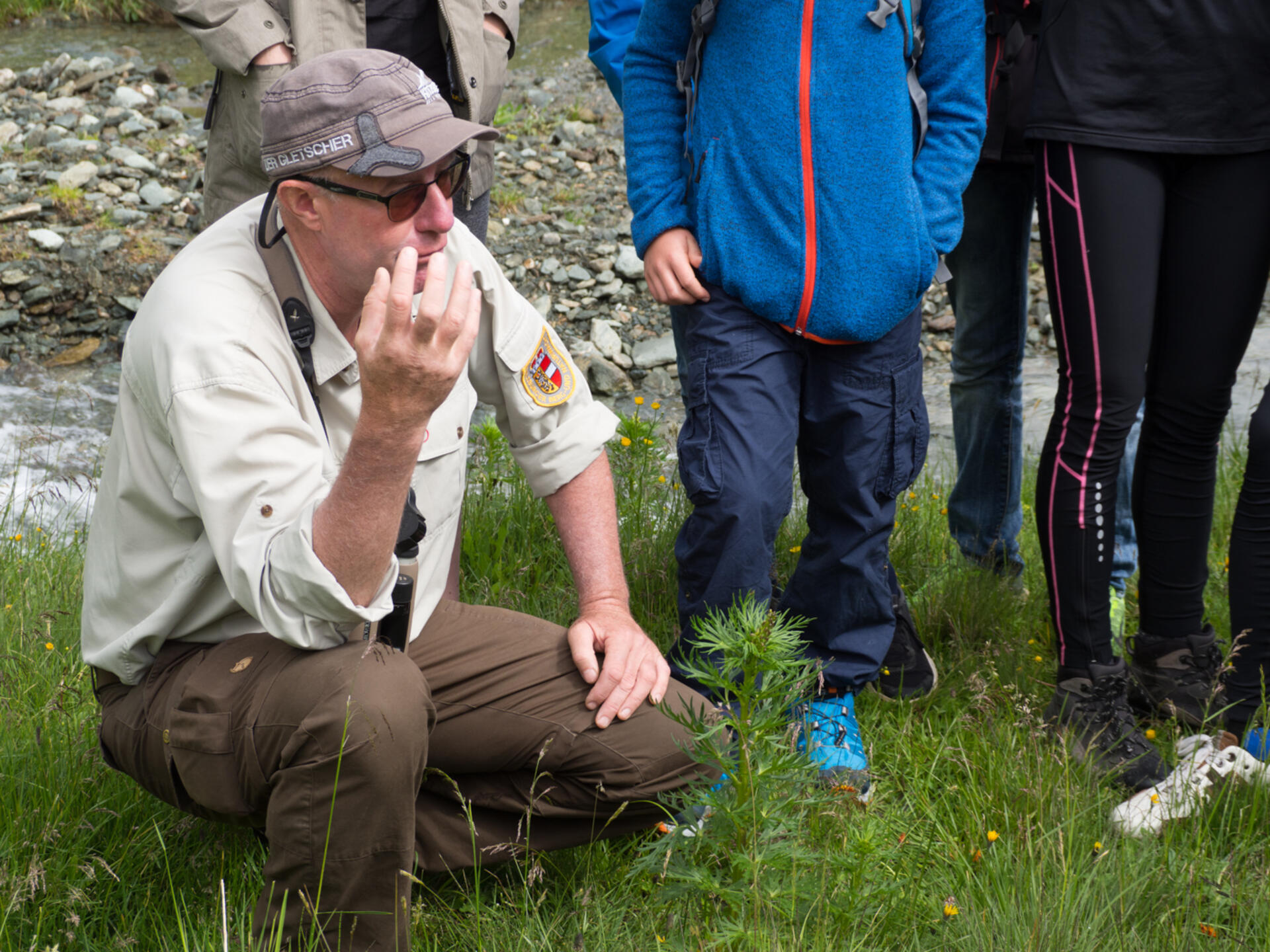
Pros and survival strategists
Plants generally have to be tougher up here, for snow lies long, nutrients in the ground are scarce, and temperatures go down quickly, even in summer. But the plants are experts and have developed special survival strategies, as Werner explains to us using the example of a particular alpine rose: "The hairy alpenrose is indeed super hairy, which helps her to survive in this climate zone, just as it's the case with edelweiss and bellflowers." And just as they do in the northern part of Sweden, reindeer cup lichen grow here, too, which serve animals as food and consequently ensure their survival. Werner says, laughing: "Reindeer would feel very much at home up here."
The arctic climate zone
At the Alpincenter on 2,450 meters, the world of rocks and ice begins. The air is noticeably crisper and last snowfields lay around. Werner tells us: "Here grows world's tiniest tree, the dwarf willow. Its trunk grows into the ground — that way, it's able to withstand snow and wind pressure." In renaturalized areas, coconut nets lay where seeds have to be protected against erosion. Also the alpine sedge that becomes thousands of years old by self-cloning helps in preventing erosion. Habitat up here is fragile. Superficially viewed, one only sees grey rock. However, in macro view you'll see that also here, at the border to the glacier ice, you can find beautiful blooms. We pay particularly close attention to where we put our feet now to protect the plants. Besides spring gentians and lichen, we also spot white rockfoil cushions. The plant has perfectly adapted to the cold climate up here. It is also known as saxifraga, which literally means 'stone breaker' in Latin. It grows in between rock cracks, which is where its name comes from, for it often looks as if it had cracked the rocks. Further up on 3,000 meters, the rarer saxifraga rudolphiana thrives, which only blooms in violet for a short period of time in spring. Also in this arctic climate zone grows the sturdy mouse-ears in the summit area.
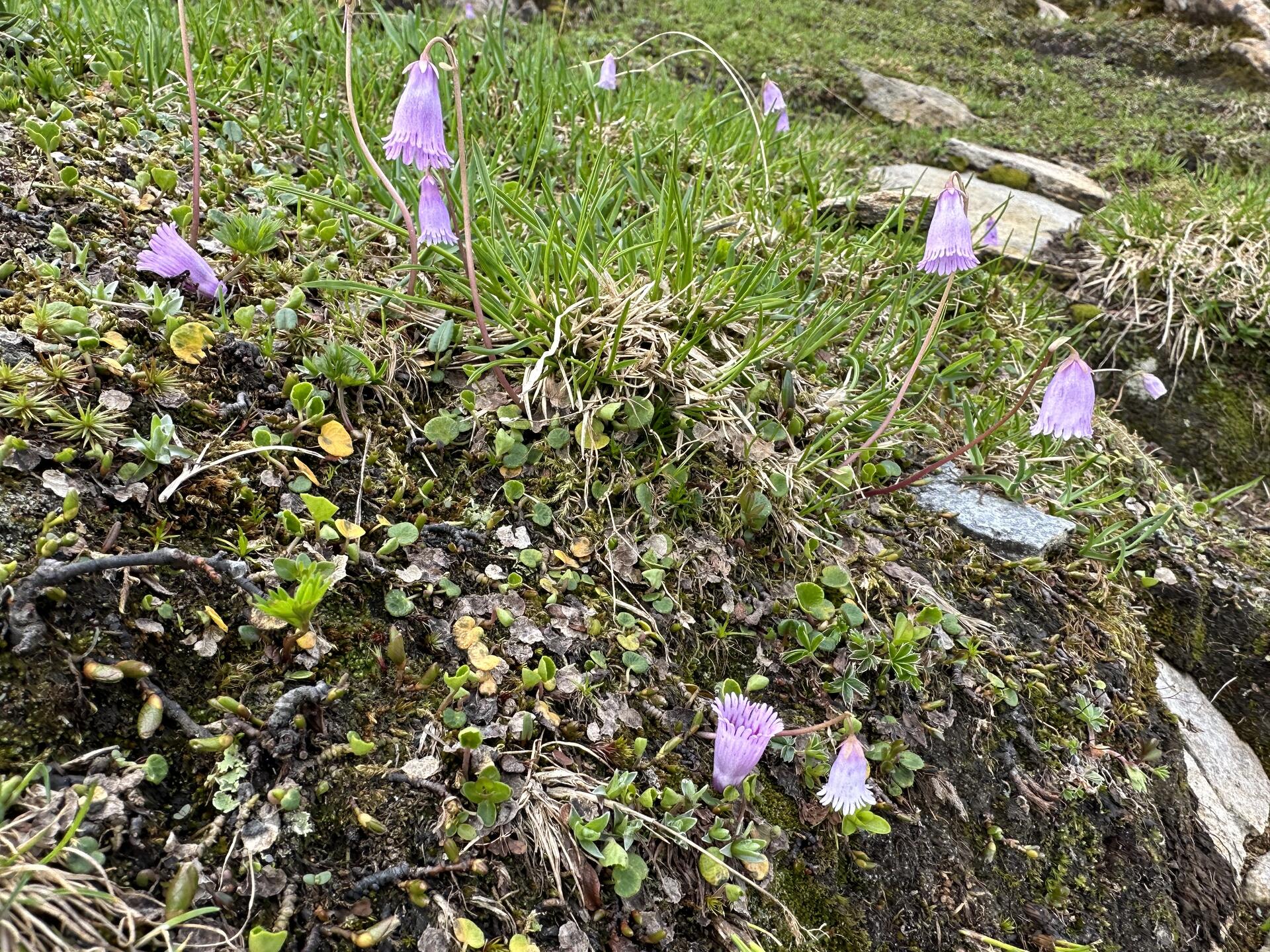
The eye now focuses on what's close up, almost forgetting about the spectacular panoramic view. But that changes the moment we take place in the Gipfel ('summit') Restaurant with its floor-to-ceiling windows. With these excursions to sensitive areas of the high-alpine habitat, the Kitzsteinhorn trains numerous visitors year after year, for those who are aware of their surroundings and know about the challenges in this climate zone will respect nature and treat it with care. The Kitzsteinhorn Explorer Tour takes place both in summer and winter together with a Hohe Tauern National Park ranger. Booking required.

